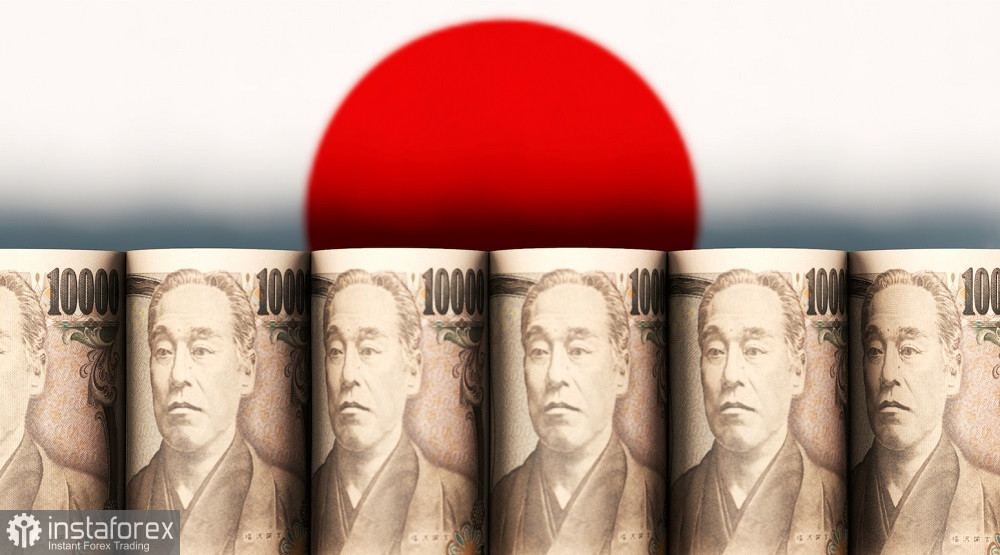On Tuesday, the Bank of Japan concluded its first meeting of the year, and it was by no means an insignificant event, despite the entirely predictable outcomes. The formal results of the January meeting were predetermined: no one doubted that the central bank would keep its key policies unchanged. Everyone was focused on the accompanying statement and, most importantly, on the rhetoric of Bank of Japan Governor Kazuo Ueda. Market participants were hoping to hear hawkish signals in the context of the prospects for monetary-policy normalization. However, this did not happen.

Not only did the central bank keep its key policies unchanged, but also its key formulations in the final communique. The press conference did not help USD/JPY traders either – neither the bulls or the bears. Ueda initially provided some support to the Japanese yen, but within a few hours, the Japanese currency returned to its previous positions. At the time of writing these lines, the pair was trading at 148.15, while the opening price was 148.09. Following Ueda's press conference, the pair hit a weekly low of 147.00, but during the European session, the yen lost all of its gains. Ueda's vague comments left more questions than answers, so it was appropriate for the market to show a mixed reaction. The "previous" situation hardly differs from the "post" situation. Ueda either repeated previously voiced theses or expressed general phrases with many "buts" and "ifs."
In particular, when commenting on the latest inflation report, the head of the central bank said that he believes the inflation rate is gradually increasing toward its 2% target, but uncertainty remains. And that it was difficult to assess how sustainable this movement is.
At the same time, the BOJ lowered its forecast for consumer inflation, excluding fresh food, to 2.4% for the fiscal year starting in April. The previous estimate, announced in October, was at 2.8%. It raised its forecast for fiscal 2025 to 1.8% from 1.7%. This fiscal year (current), core inflation is still expected to be around 2.8%. In addition, the Japanese central bank revised downward its forecast for GDP growth. It is anticipated that by the end of 2023, GDP will increase by 1.8%, whereas the previous forecast projected growth at 2.0%. The forecast for 2024 has improved (from 1% to 1.2%), while the 2025 forecast remains unchanged (at "around 1%").
Ueda did not provide any concrete details in regards to the prospects of monetary policy. He mentioned that the BOJ will consider its easy-policy exit only when it is confident in achieving its inflation target. In addition, he warned that financial conditions would remain "very accommodative for a while" even if the central bank moves away from negative interest rate policy.
Furthermore, Ueda reiterated his signature phrase (inherited from his predecessor) that the central bank will not hesitate to take additional easing measures if necessary.
In response to reporters' questions, Ueda emphasized the importance of spring wage negotiations scheduled for April. This provided a timeframe: in approximately four months, the central bank will have more complete information (about wage dynamics and inflation), and then it will begin discussions (or not) on the normalization of monetary policy. In case of a positive (for the yen) scenario, a very gradual rate hike cycle may begin around the middle of this year.
In summary, we came to the conclusion that the BOJ disappointed both buyers and sellers. The question of monetary policy calibration has been postponed to the distant future, at least until spring. As a result, USD/JPY traders will now be looking to the greenback, which, in turn, is waiting for three crucial events: the release of U.S. GDP data for the fourth quarter (on January 25), the release of the core PCE index (on January 26), and the Federal Reserve's January meeting (with results announced on January 31). These economic reports have the potential to influence the Fed's stance, so the dollar will react very sensitively to these reports.
From a technical standpoint, the pair retains its potential for further growth. On the daily timeframe, the price is in between the middle and upper Bollinger Bands lines, as well as above all the lines of the Ichimoku indicator, which has formed a bullish "Parade of Lines" signal. The nearest target for the bullish movement is the level of 148.80 (the upper Bollinger Bands line on the 4-hour chart). The primary target is located 100 pips higher at the level of 149.80 (the upper Bollinger Bands line on the daily chart).
 English
English 
 Русский
Русский Bahasa Indonesia
Bahasa Indonesia Bahasa Malay
Bahasa Malay ไทย
ไทย Español
Español Deutsch
Deutsch Български
Български Français
Français Tiếng Việt
Tiếng Việt 中文
中文 বাংলা
বাংলা हिन्दी
हिन्दी Čeština
Čeština Українська
Українська Română
Română

